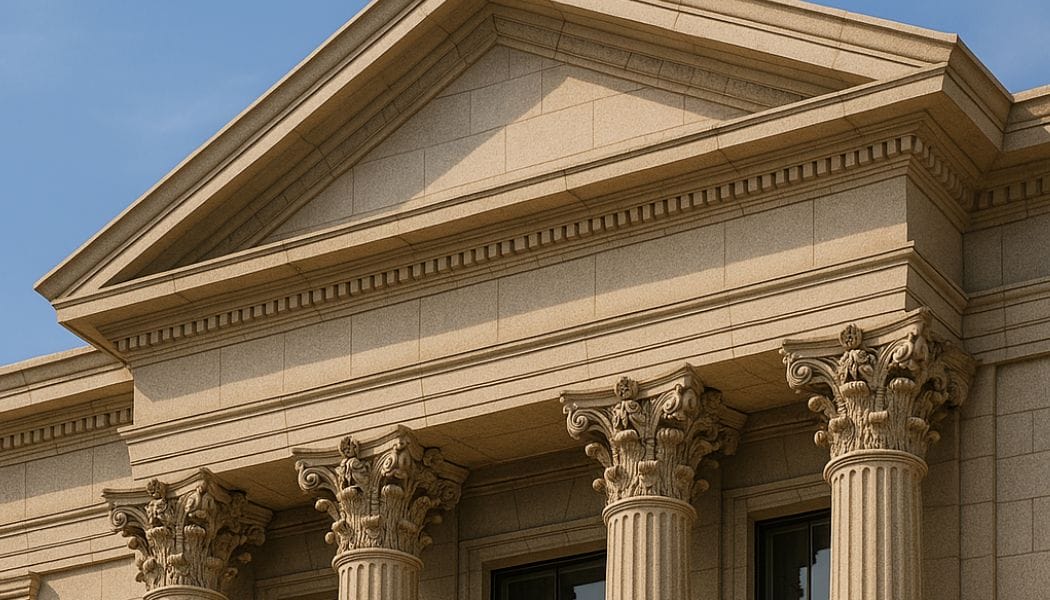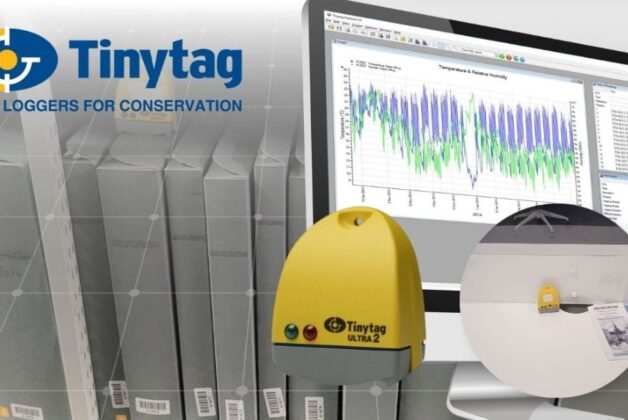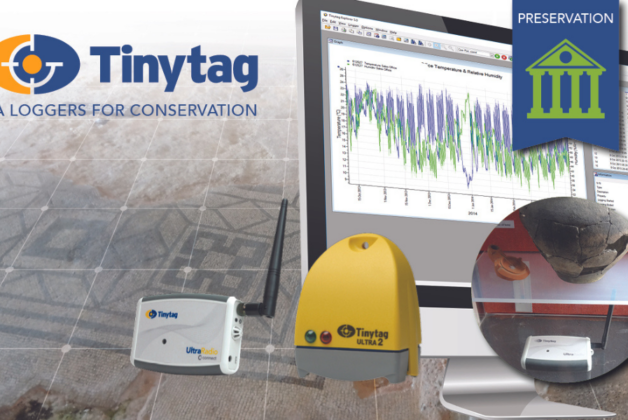Museum Development South West is using Tinytag data loggers to support over 300 museums in safeguarding collections, driving improvements in environmental monitoring and securing vital conservation funding.
Behind every well-preserved artefact, there’s a story of care, knowledge, and often, technology quietly working in the background. At Gemini Data Loggers, we’re proud to support the dedicated professionals who preserve our shared heritage, one data reading at a time.
One of the most impactful examples of this is our ongoing collaboration with Museum Development South West (MDSW), an organisation that supports over 300 accredited museums (and many more unaccredited ones) across one of the UK’s most geographically and historically-diverse regions.
These include local history collections, specialist costume archives, military museums, maritime heritage centres, and rural sites showcasing everything from fossilised sea creatures to Victorian farm equipment. But despite their range and richness, many of these museums have one thing in common: limited access to in-house conservation expertise or environmental monitoring infrastructure.
That’s where Tinytag by Gemini Data Loggers and the support of MDSW’s Collections Care Officer, Helena Jaeschke, are making a measurable difference.
Environmental Monitoring Made Accessible
Environmental conditions – such as temperature, humidity, and light levels – play a critical role in the long-term preservation of museum collections. Unstable conditions can lead to mould, warping, brittleness, or fading, which is why consistent monitoring is essential for preventive conservation.
However, as Helena points out, “Many museums still rely on spot checks with handheld meters, or simple daily logs written down by volunteers. These methods are helpful, but they don’t capture fluctuations that can occur at night, during seasonal shifts, or between different parts of a room.”
To support these institutions, MDSW offers loanable Tinytag data loggers for up to six months at a time – giving museums an accessible, low-barrier way to collect continuous environmental data and build evidence for action.
Why Tinytag?
Tinytag loggers are compact, easy to use, and don’t require complex installation – an essential advantage for listed buildings and sites with limited tech infrastructure.
Once deployed, they quietly log environmental conditions at regular intervals. Museums can then use Tinytag Explorer software to generate graphs, compare locations, and identify risk areas. The visual clarity of the data helps teams with limited technical expertise to make informed decisions quickly and confidently.
Our products are often the first step in a museum’s journey toward more sophisticated collection care, they provide the visibility needed to act proactively rather than reactively – and they support better planning, grant applications, and stakeholder confidence.
From Data to Action
With reliable data in hand, museums are empowered to take the next step – whether it’s moving a vulnerable object to a more stable location, adjusting ventilation routines, or applying for targeted funding.
One key example is the Association of Independent Museums’ conservation grant, which prioritises applications that include detailed environmental data. “We’ve seen several museums improve their success rates for funding simply by including six months of logger data and a clearly defined conservation goal,” Helena explains.
Loggers are also useful in situations involving incoming or outgoing loans, particularly when museums are borrowing valuable objects from national collections. Being able to monitor display conditions before, during, and after a loan helps build trust and demonstrate a museum’s commitment to best practice.
Broad Use Across Diverse Collections
The South West is home to an extraordinary variety of museums, from city-centre institutions to remote community-run sites. Each comes with its own challenges.
- Textile collections need light and humidity monitoring to avoid discolouration and fibre breakdown
- Leather objects in rural and military museums are vulnerable to cracking and fungal growth
- Natural history collections require stable conditions to preserve specimens
- Photographs, archives, and works on paper are particularly sensitive to fluctuating humidity
By using Tinytag devices, museums can gather comparative data across all these contexts, leading to site-specific insights and cost-effective improvements.
Building Confidence, One Reading at a Time
For many teams, especially those without conservators, Tinytag has become a trusted tool in a growing toolbox. Helena reflects that the simplicity of the interface and reliability of the loggers are critical: “They’re straightforward enough for volunteers to use, but robust enough to produce data that informs strategic planning.”
At Tinytag, we’re incredibly proud that our technology is playing a quiet but powerful role in this ecosystem of care.
Looking Ahead
MDSW and other regional support organisations are now exploring how to expand environmental monitoring capacity even further – looking at light and UV monitoring, energy efficiency tracking, and integrations with building management systems. In many cases, museums are starting small with a USB logger and building toward larger data strategies over time.
For Tinytag, this trajectory fits perfectly with our mission: to offer flexible, accessible, and reliable tools that help people protect what matters most – whether it’s within the walls of a national museum or a converted chapel in rural Cornwall.
If you’re involved in collections care and would like to explore how environmental monitoring can support your work, we’d love to hear from you.
Visit www.geminidataloggers.com or get in touch to discuss how our products can help you care for collections of every kind.





